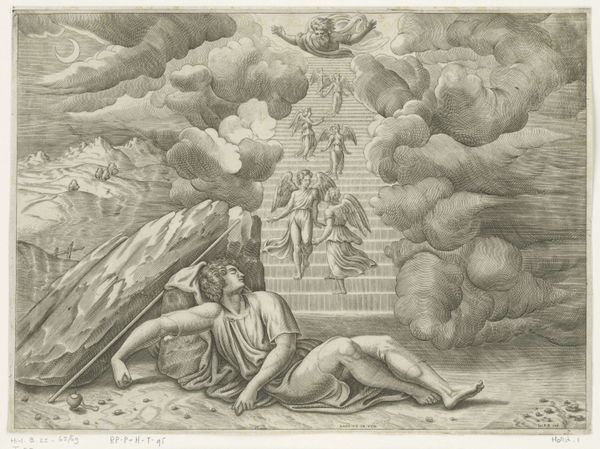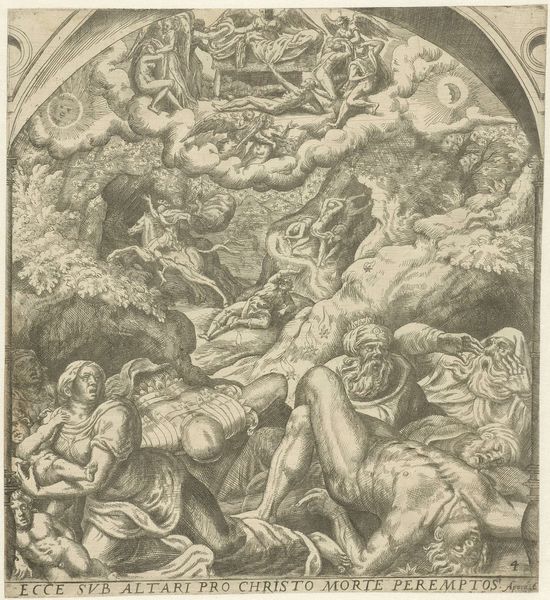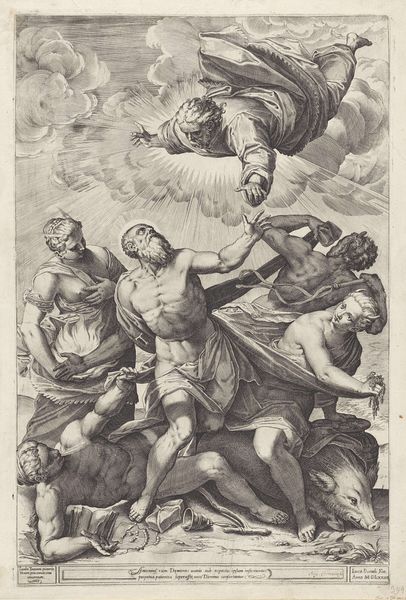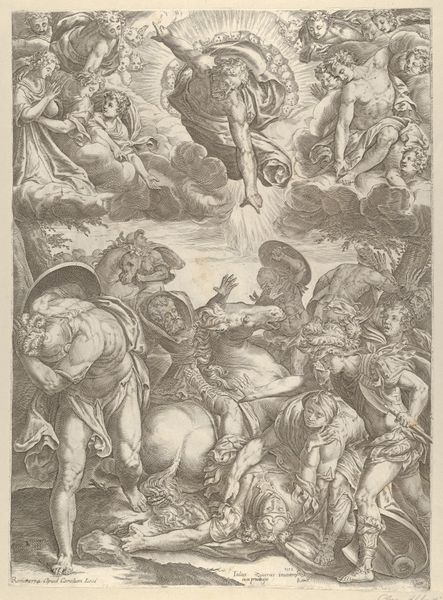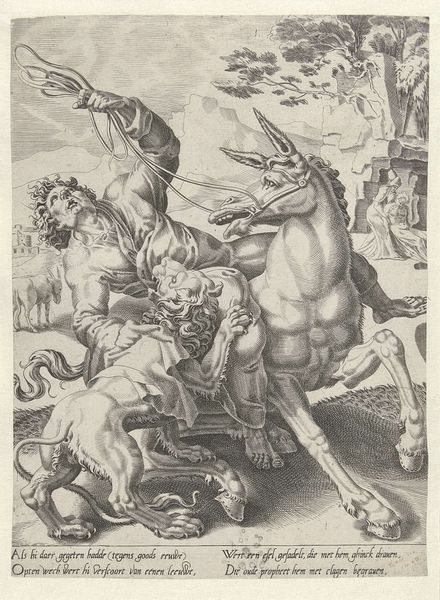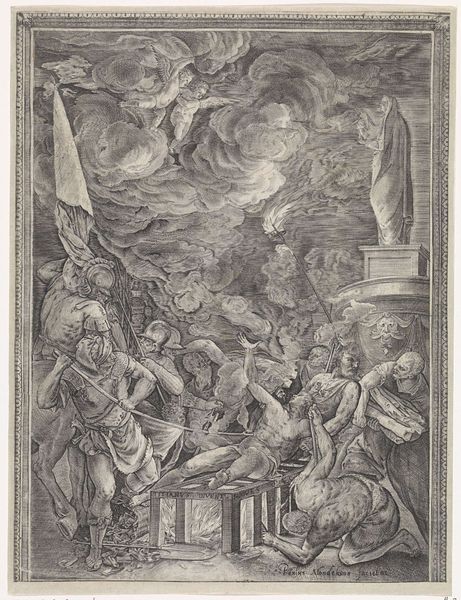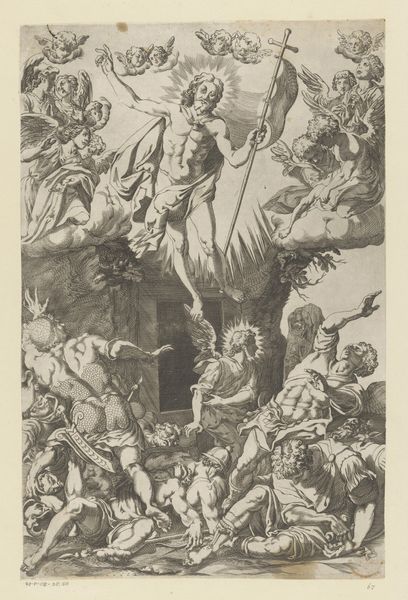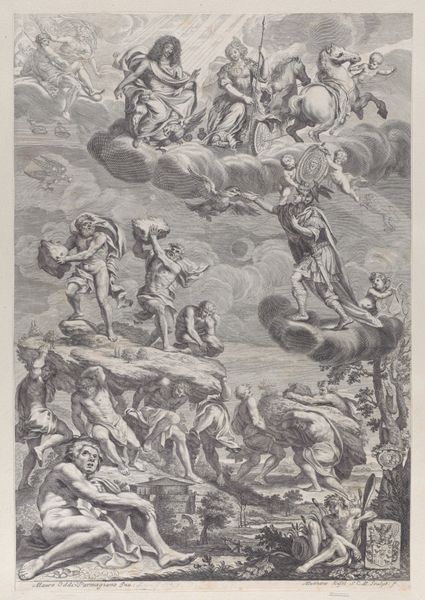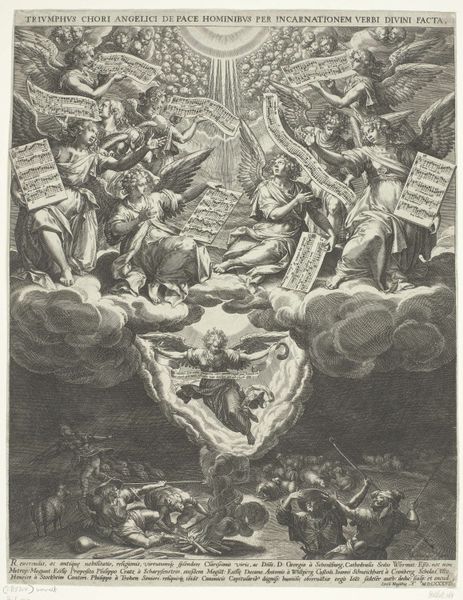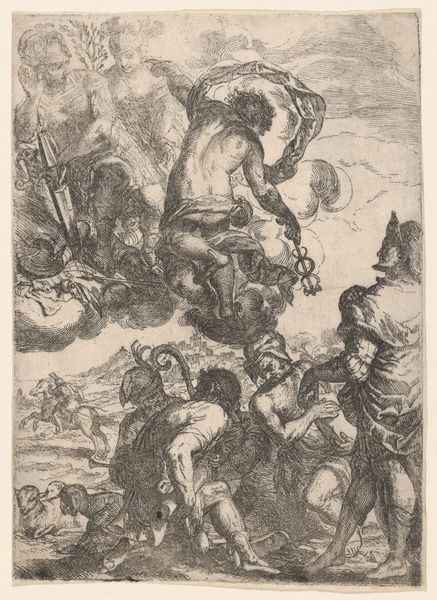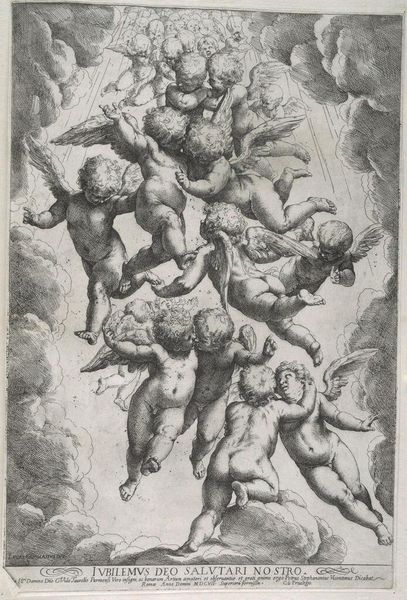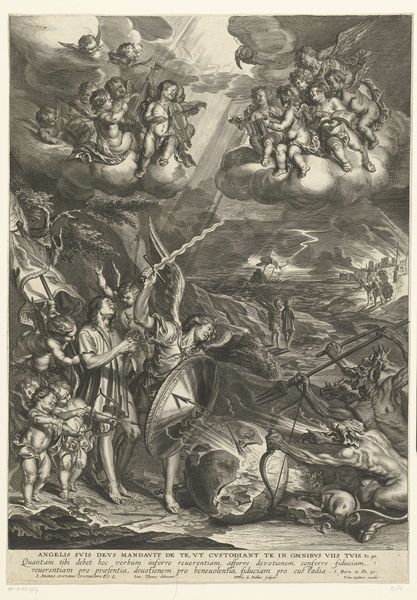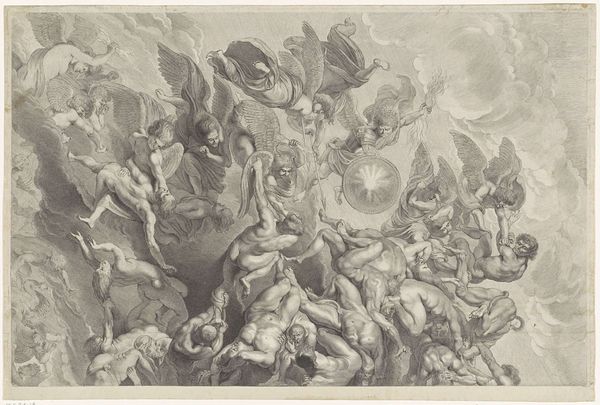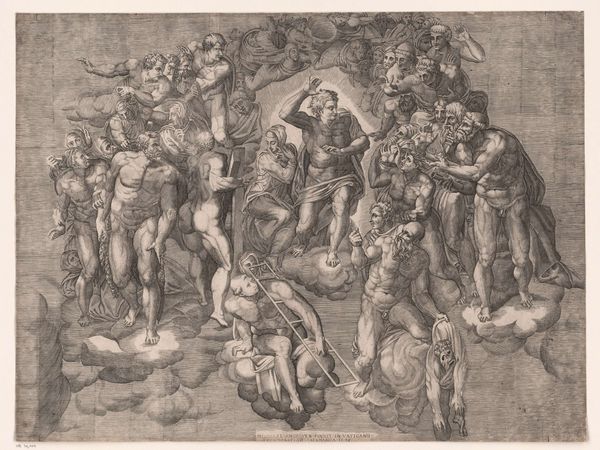
print, ink, engraving
# print
#
pen sketch
#
mannerism
#
figuration
#
ink
#
pen-ink sketch
#
line
#
pen work
#
northern-renaissance
#
engraving
Dimensions: height 485 mm, width 340 mm
Copyright: Rijks Museum: Open Domain
Cornelis Bos made this engraving of Lazarus in Abraham's bosom and the rich man in hell sometime in the first half of the 16th century. An engraving is made by carefully incising lines into a metal plate, inking it, and then pressing paper against the surface. The fine, precise lines are evidence of the skill and labor required for this process. Here, the material and process are crucial to understanding the artwork’s impact. Bos used the repeatable nature of printmaking to comment on social inequality. The story itself is a parable about the reversal of fortunes between a poor man and a rich one after death, but the choice of engraving as a medium amplifies this message. Printmaking allowed for wider distribution and accessibility of this critique, enabling these ideas to reach a broader audience than a unique painting ever could. This artwork highlights how material choices and methods of production can imbue an artwork with social and cultural relevance. It challenges the traditional art historical distinction between fine art and craft, revealing how both can be powerful tools for social commentary.
Comments
No comments
Be the first to comment and join the conversation on the ultimate creative platform.
